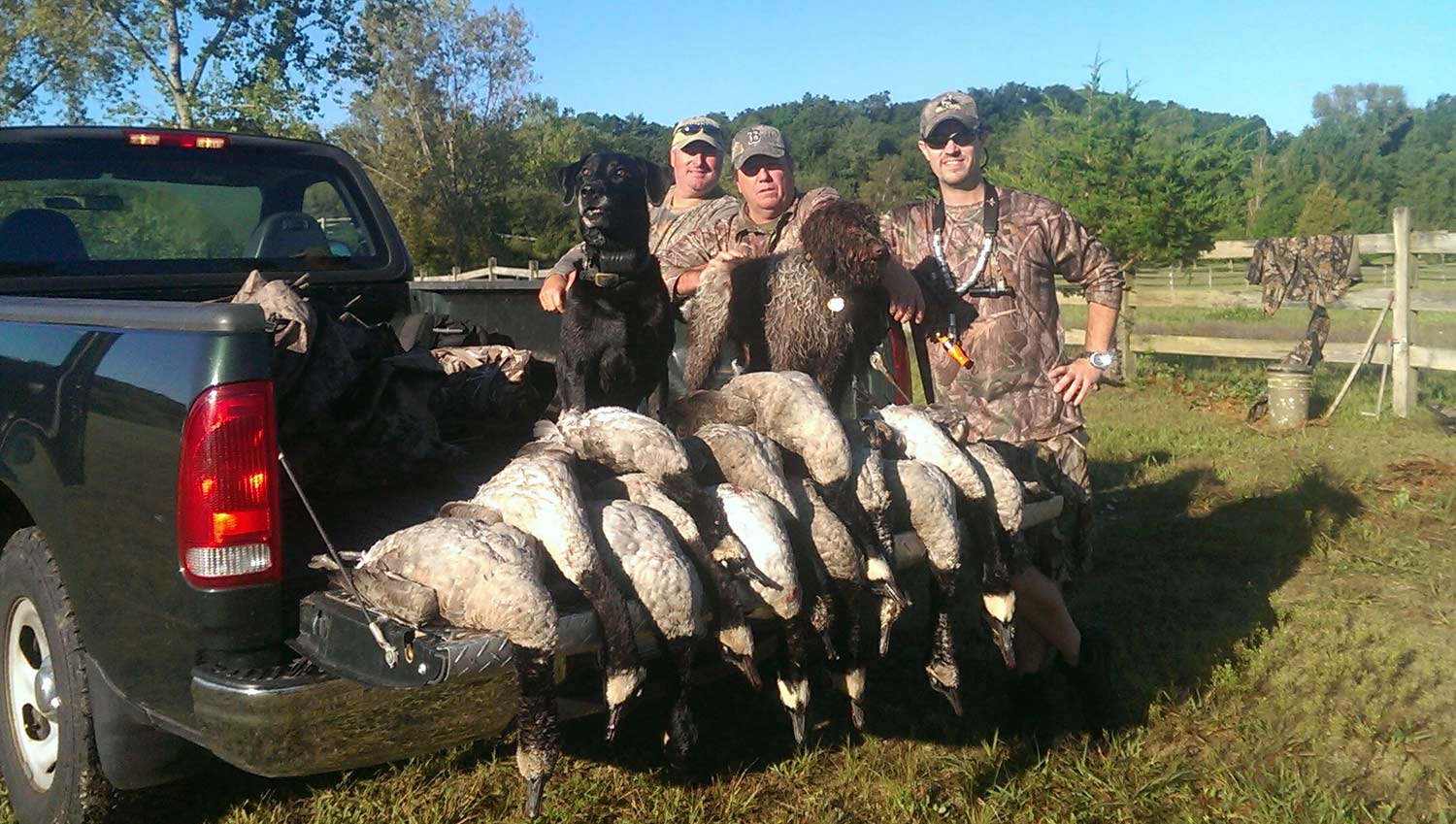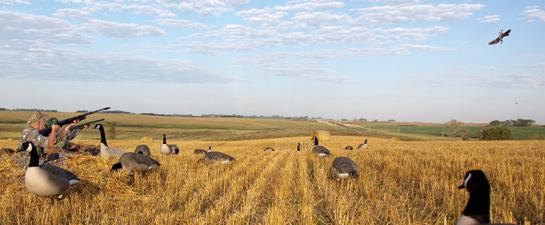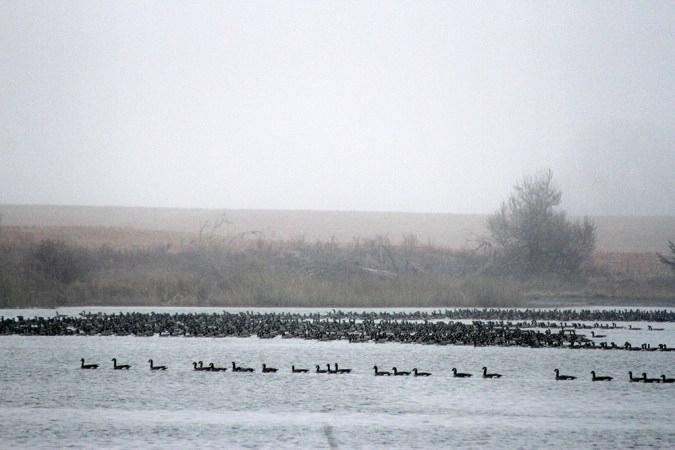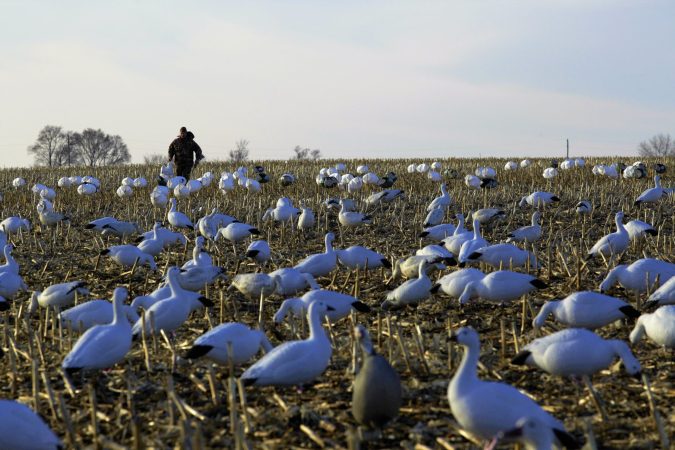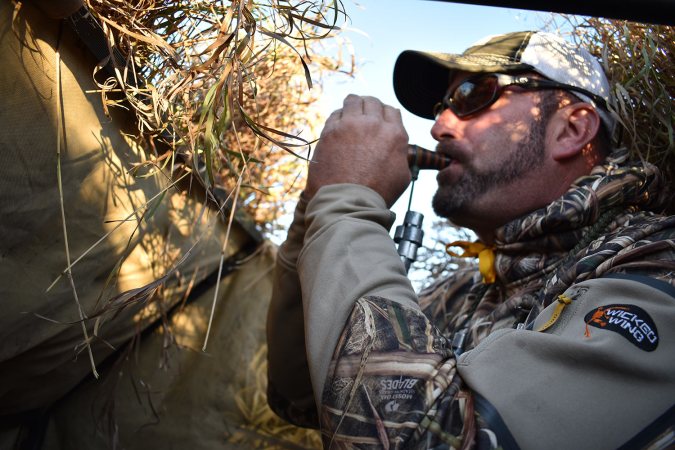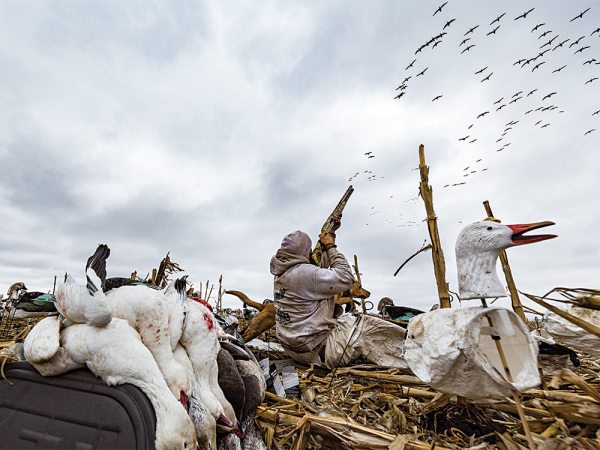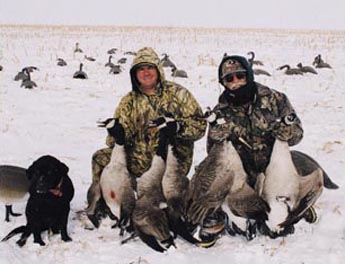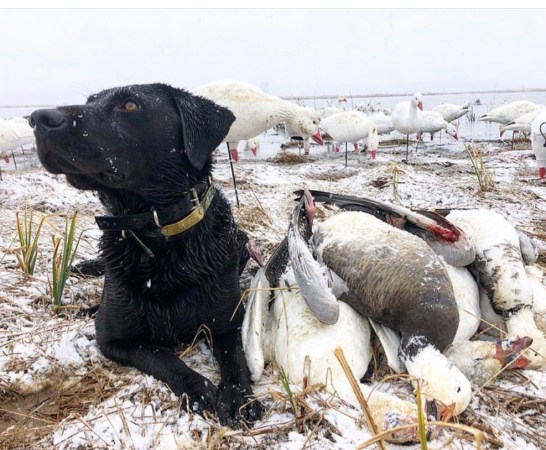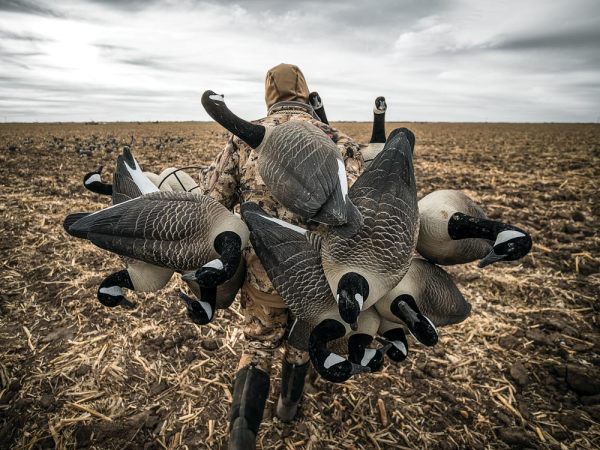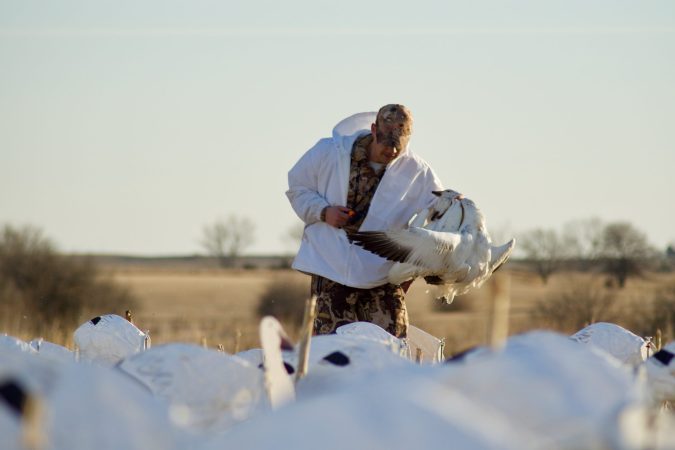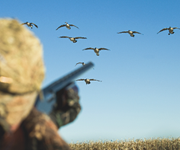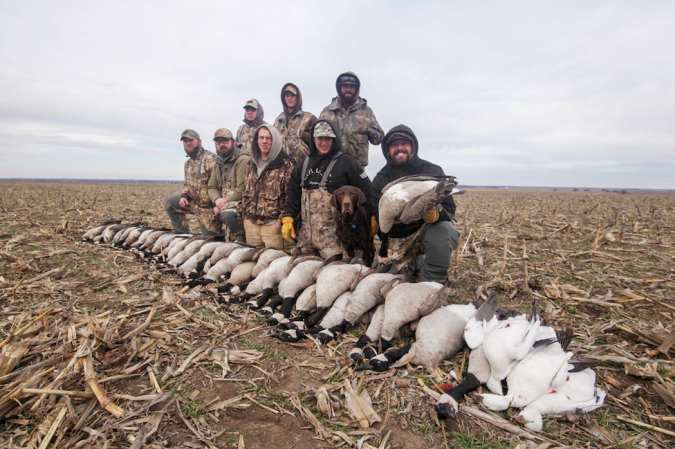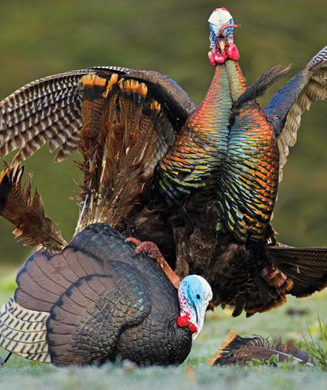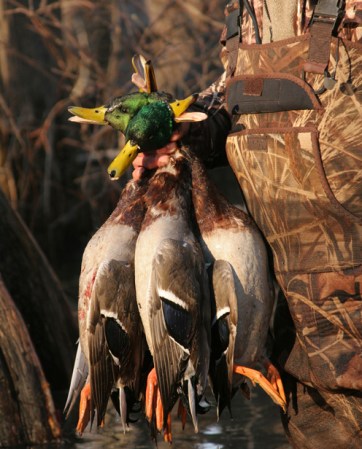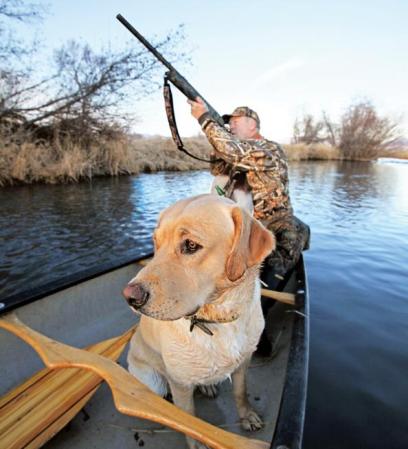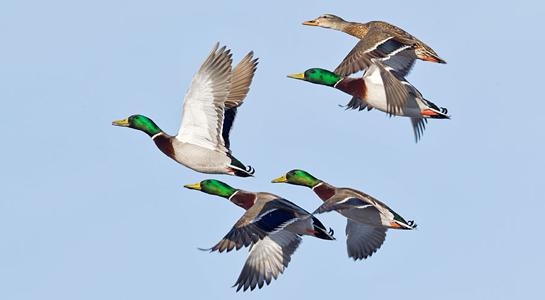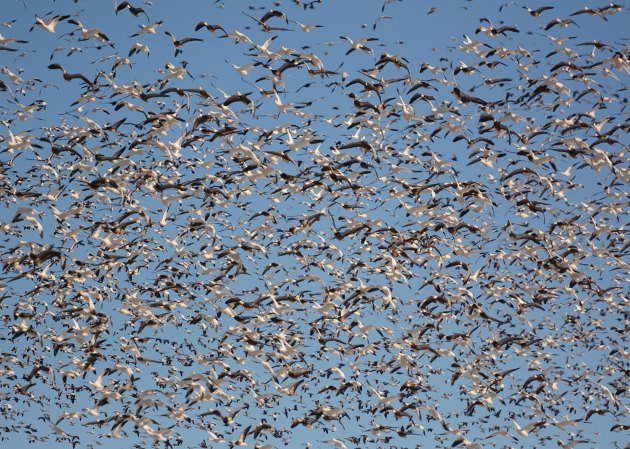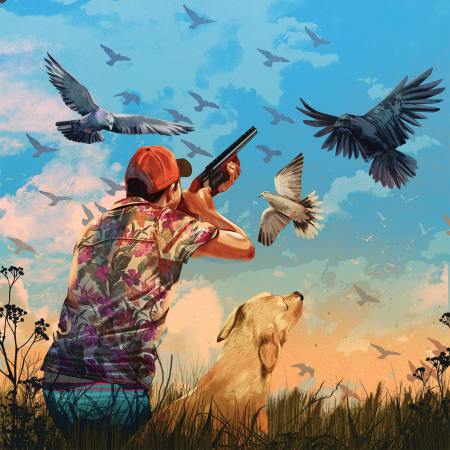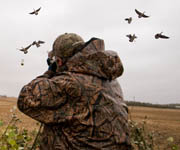The entire concept of early season goose hunting seems easy enough. You’ve seen the same flock of resident Canadas in the same field for a week—every day—on the way to work. A lay-up hunt if there ever was one. Well, through the years I’ve come to realize that there’s typically no such thing as simple when it comes to resident geese. They know the area like you know you’re living room and not paying attention to detail can turn your pre-planned goose dinner into a serving of humble pie.
Finding the body of water where they roost in the evening is great. Finding the feeding area that they head to first thing in the morning—whether it be a ball field, hay field, corn field or even just someones yard—can also put you in the game. But being successful on a regular basis takes a a bit more work.
1. Know Their Haunts
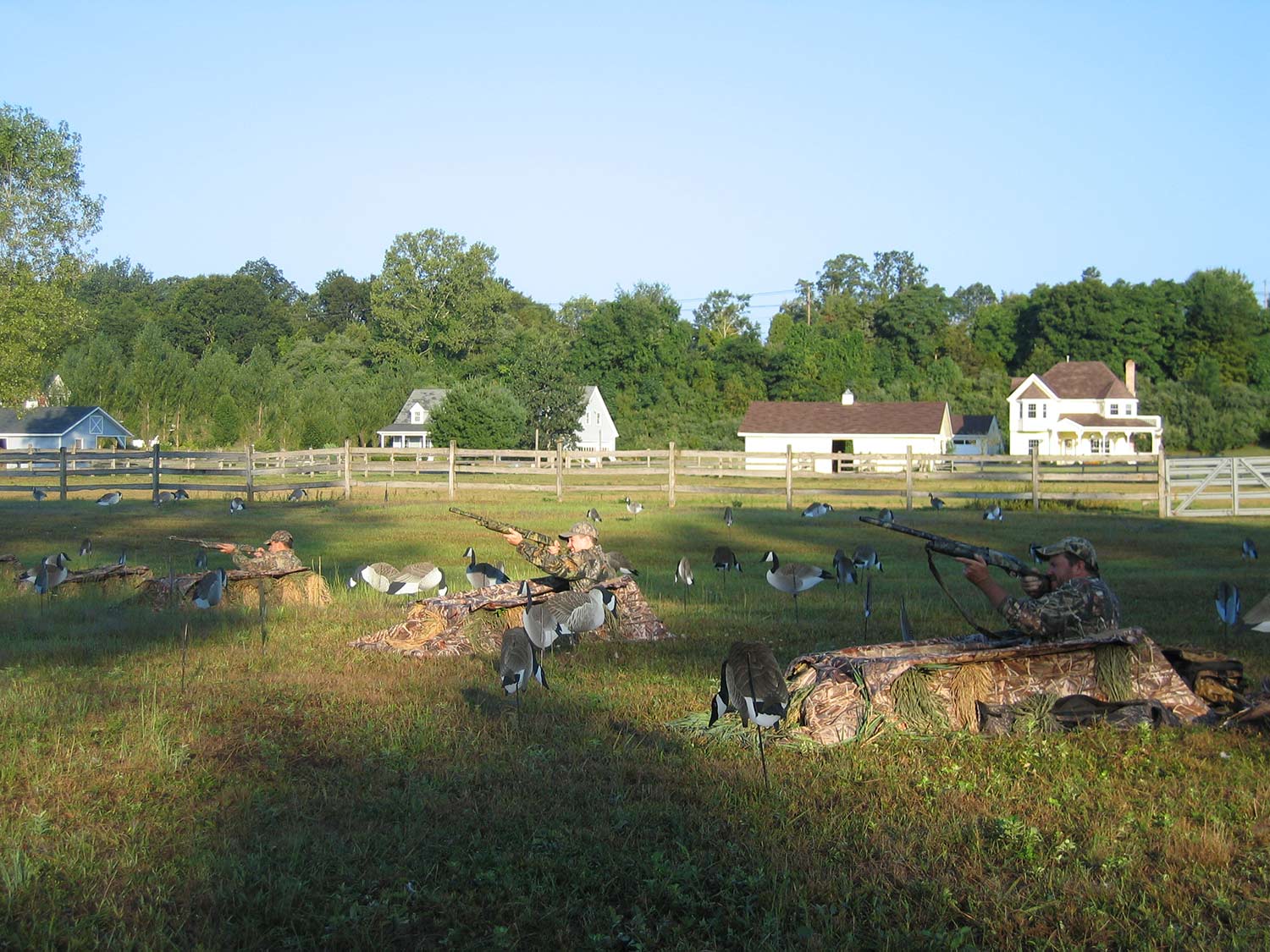
No matter what you’re hunting—waterfowl, whitetails, turkeys, etc.—success all starts with familiarizing yourself with your target species’ habits and habitat. Geese are no exception.
Finding the roosts and feeding areas of your resident flock will not only let you know where to hunt, but how to hunt them. Watching their daily patterns will provide great intel, but it’s important to keep an open mind.
Be aware that early season hunting conditions change quickly. As new fields get cut—a regular occurrence as the season opens—more food sources become available and will likely cause a shift in goose behavior. Pay close attention to the big picture of habitat changes and be prepared to shift accordingly.
2. Scout The Local “Flyway”
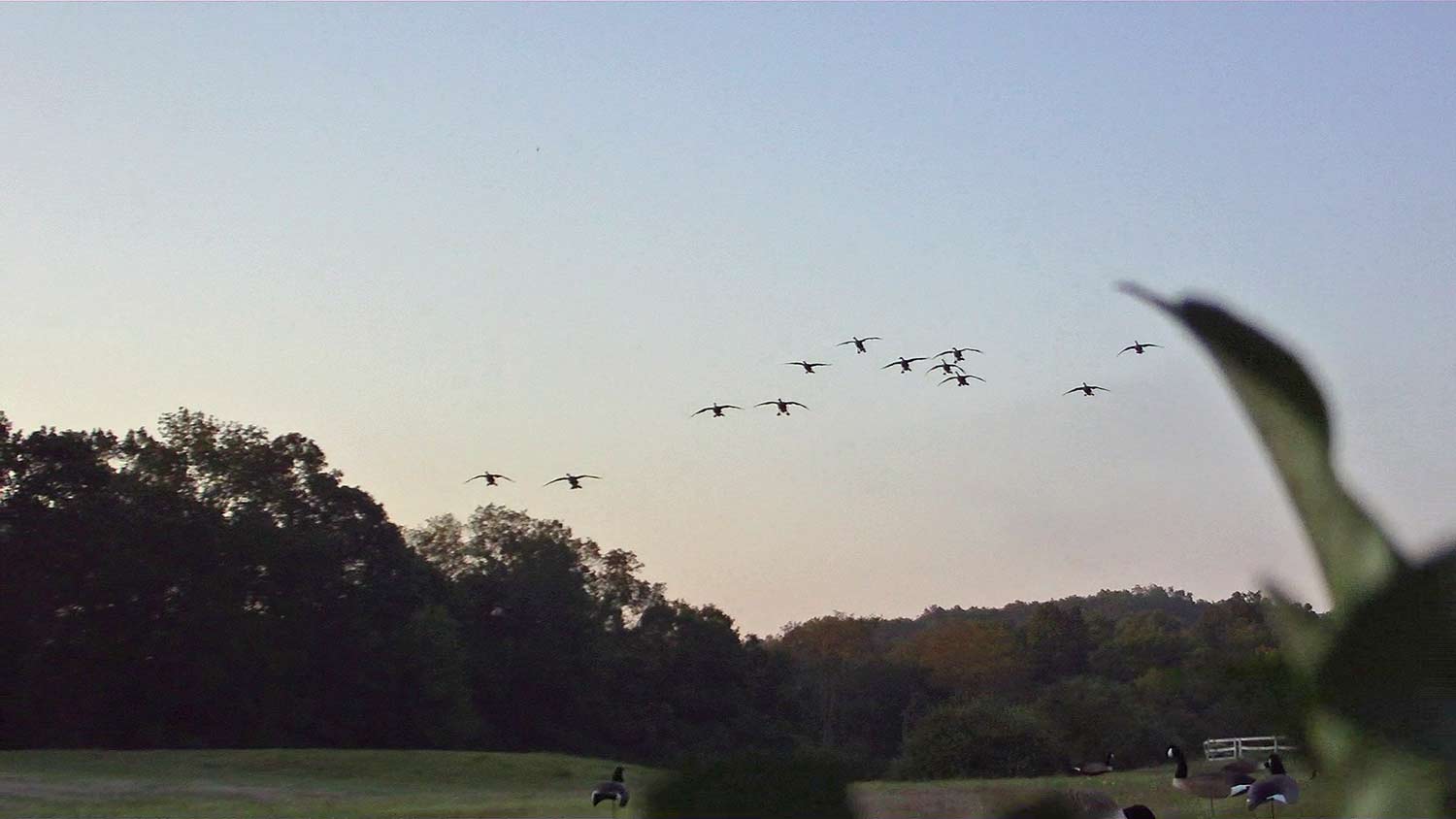
Tracking the travel corridor can do a few things for a hunter willing to follow birds from point A to point B.
First off, it allows you to know approximately what time geese get off the water and begin their approach. Their promptness is never a given—I’ve been caught standing around way too many times as my scouted flock came over the treetops and picked me off—but a basic timeline will have you better prepared and in position when they show. This is invaluable if they drop in unannounced on their approach, which is often the case with local birds that already know where they’re going.
It will also give you an idea of how many birds are using a particular area and the frequency of the flocks. For example, you may not want to waste your time on a field that 50 birds are using if every morning they show up all at once. If, however, they show up in five groups of 10, you may be looking at a great shoot. Manageable size flocks and multiple opportunities can be a lot of fun.
Familiarizing yourself with their travel corridor can also help you identify alternative hunting areas. Remember this: If you hunt the “X,” you might blow them out and only get one hunt— especially during early season. But, if you hunt between the roost and the feed area, the birds may still continue on to the original destination to feed after you shoot. This means they may do the same thing the next day since they ultimately made it to their original destination. This can provide you multiple days of hunting on a feeding field.
3. Study Peculiarities
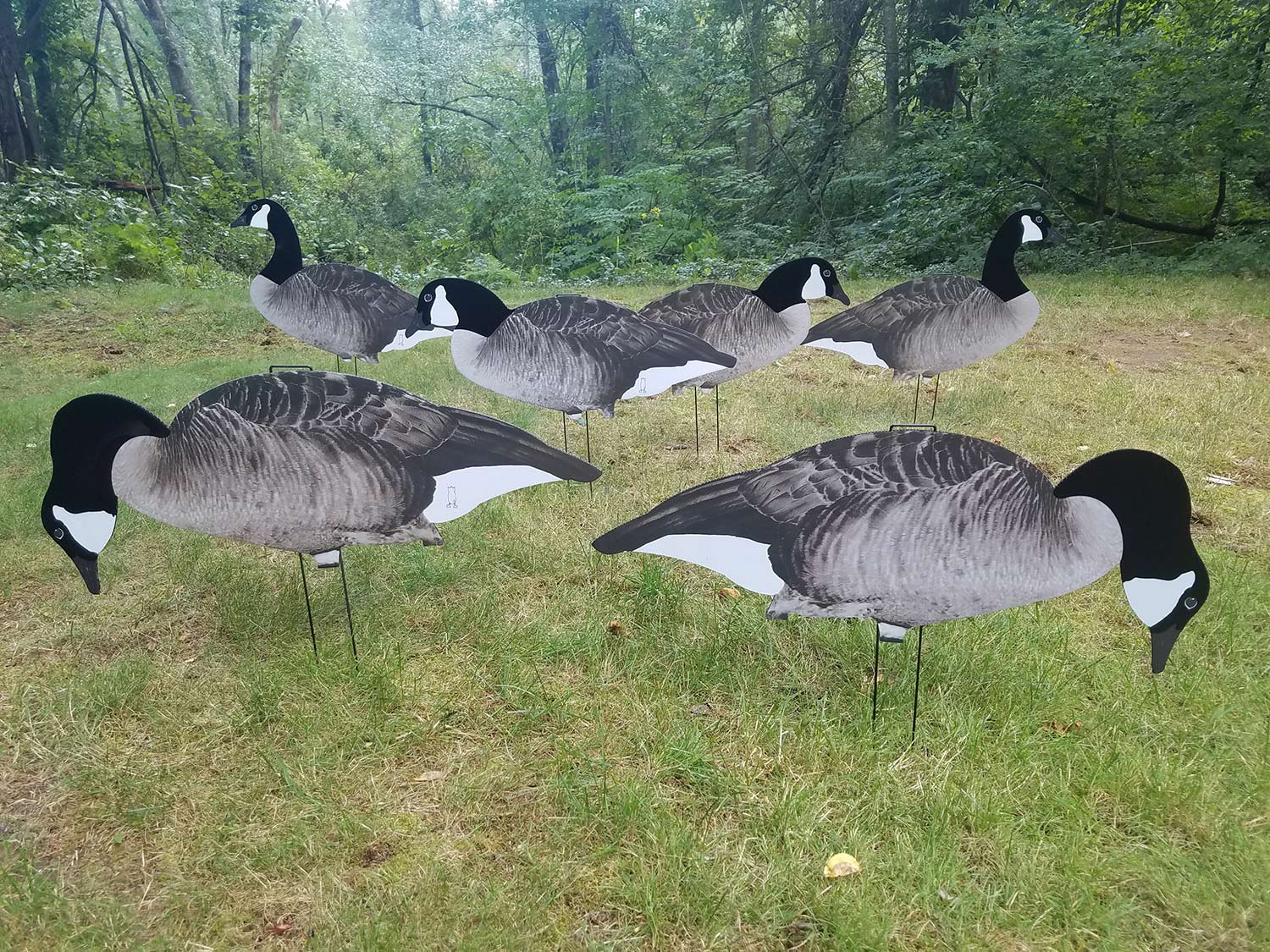
Resident birds that live in the same area for a majority of the year will often defy the general goose hunting rules of thumb. Pay attention to these subtleties.
They don’t always sit on the high spots out in the wide open. They may land in a field corner that offers shade and protection from the wind, perhaps in a small horse corral that provides them with access to stray grain. Keep a close eye on how they approach. Many times local birds will avoid landing into the wind in order to set into a protected place with optimum feed. Watch for cuts in the tree line that allow them to quickly drop below the wind, no matter which way it’s blowing, and land in a spot they know and have come to trust.
These things can give you the upper hand when deciding where to set up and elevate a good hunt to a great one.
Read Next: How to Hunt Resident Geese
4. Pattern Your Gun
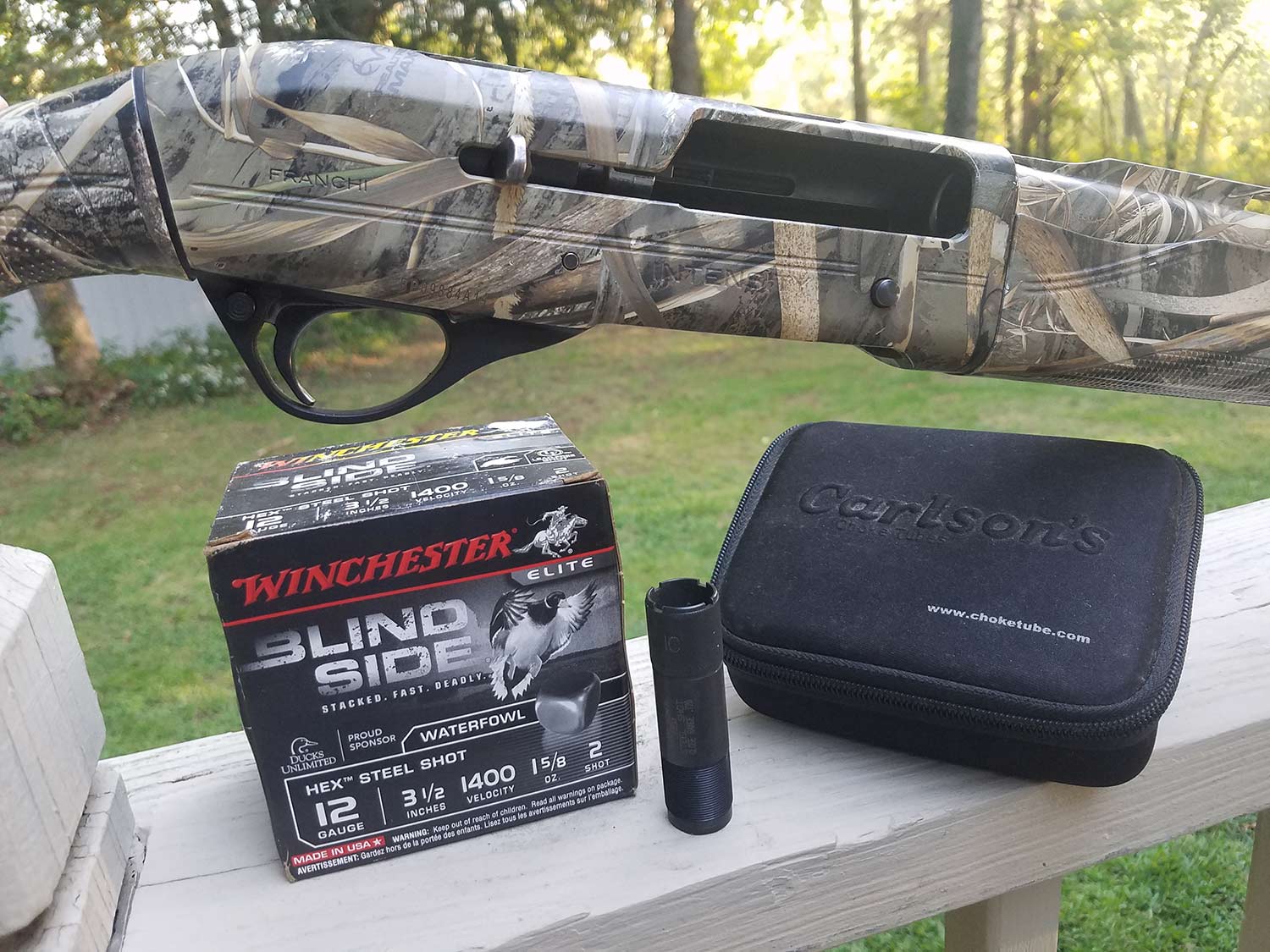
When it comes to shooting, I’ll take any help I can get. We do all this work on gaining permission, scouting, setting decoys, learning to call etc. and when it comes to pulling the trigger we all just take it for granted that we point, the gun goes bang, and the bird falls. Well unfortunately that doesn’t always happen.
It’s equally critical to pay attention to the part that closes the deal for you. There is a reason special waterfowl loads, chokes, and fiber-optic beads are made. All sorts of things can help you get on target and harvest that bird more effectively. Get to a range.
At very least, grab your shotgun, favorite waterfowl load, a couple of chokes, some paper, and cardboard. Go find a place to shoot, pace off the distance of your average shot and have at it. The worst-case scenario is that you’ll at least know where your gun shoots and if the point of aim matches the point of impact.
Try to match up the shot size you use with the choke that yields the most even pattern at your given distance. It doesn’t necessarily need to be the tightest, since you may shoot closer and you don’t want to destroy the bird. But pick a pattern that you can shoot closer and have a decent spread, while still having it dense enough to stretch it out a little further just in case they don’t totally commit.
5. Hide Right
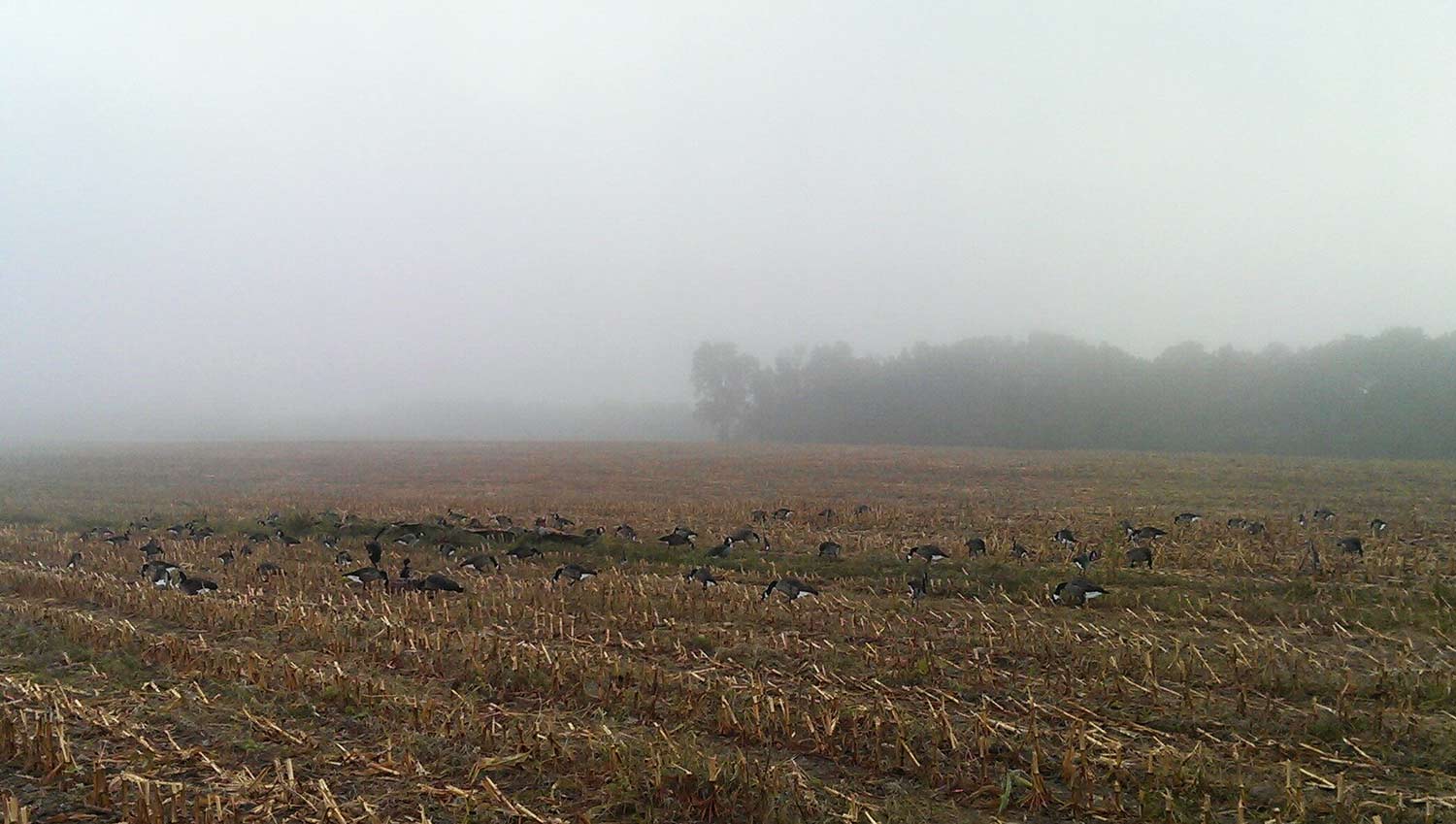
Objectively assess the area you’re going to hunt. It’s obviously best to be on the “X,” but if the cover is thin, you’ll need to adapt. There is no sense setting up in a great spot and ruining the morning by sticking out like a sore thumb, flaring all the birds, and going home empty handed.
Obviously being out of the way or in a position with obstacles isn’t the greatest decision either, but look for the happy medium. Utilize any and all options to break up your outline and whenever possible use natural cover. It always blends better and is more effective than artificial.
Look for taller grasses for your layout blind. The ability to use the grass to cover your blind will ensure a perfect match and can make it virtually disappear. Changes in terrain can also help in breaking up your outline. By setting in a depression or up against a bank, you can reduce unnatural shadows and lower your overall profile.
These things can greatly increase your success in the field. It’s in my opinion that decoys and calling usually come second to concealment. If your birds are not finishing or are flaring at a distance, take a good look at hiding spot. Chances are, more often than not, that’s where the issue lies.
6. Dekes And How To Use Them
The number of decoys that you elect to use is, of course, a matter of personal preference. Many hunters will kill geese consistently over a half-dozen decoys, but my outlook on that is: “you put your six in that field, I’ll put my 10 dozen over here and we’ll see how it works out.”
Flippancy aside, you can solve the riddle of decoy numbers by reading if you carefully read the clues that the birds are providing. How many birds are feeding in the field that you’ll be hunting and what’s natural to that area? You don’t want to throw out 10 dozen decoys in an area that max’s out at 50 or 60 birds. If those birds are used to flying in and seeing 30 or 40 birds, try to match that number.
Put some around your position to create confidence and security, and hide the flaws in your setup spot. Fill in areas where you don’t want geese to land in order to force them into landing strategically. Remember to break up the layout into family groups. These groups are more prevalent during the early season because the families often consist of many juvenile birds that will stay close to the parents.
Read Next: How to Set Up on Early-Season Honkers
7. Pick The Right Decoy Posture
Understanding what your decoys are communicating to resident geese might seem a ridiculous undertaking to some, but in the animal world body posture means all. Just like a gobbler struts his stuff in a dominance display in the spring, or a big moose sways his antlers back and forth during the rut, a goose’s body position tells a tale.
Obviously, the feeder position indicates contentment and security as well as the opportunity for nourishment. It should also make up the majority of your spread since the birds in the air, more often than not, are looking for a place to feed.
The head in a slightly raised position signals a walker, which is great for the back end of the spread—where birds might have landed and are moving in to be with the rest.
The sentinel position—a high stretched neck—is sometimes referred to as “the looker.” This position is designed to imitate a goose that’s on the alert for danger and is a great addition to each family group you imitate. It’s also one of the two positions I like to put in the landing zone because the deke usually isn’t moving
The landing zone needs to be as convincing as possible and I typically opt for fewer decoys here. Feeders and lookers can still look realistic without movement, so those are the two I choose. Birds that have just landed will often put their heads straight up to assess the situation. They stand there and look around, while others might dig right in and start eating.
Put a few of these scattered throughout your landing zone, paired up or on their own to create confidence in an otherwise open area, and you’ll be putting birds in your face before you know it.
8. When (And When Not) To Call
Everyone has their own—often very subjective—opinion on calling, but most agree on a few rules.
First of all, trust what you’ve seen. If the birds you’ve watched don’t talk much, then don’t talk much. If they are very vocal and protective of a particular feeding zone, then be loud. Trust your scouting—when the birds were undisturbed and on their own.
Listen to the birds and play off them. Let the birds designate the level of communication or convincement they need. Early in the season, you know they are coming, so there is no need to try to draw them to your position with calling any more than necessary.
Read the flock as they approach. If they seem somewhat disinterested, give a few more convincing low-end growls and a couple of clucks. If they start getting excited, continue. Often times an action/reaction type situation occurs between flocks. If the birds are coming in and start drifting away, give them a little more to put them back on track.
When the birds start to set up, don’t shut down what you’re doing. Hunters sometimes have a tendency to go straight to a laydown call when birds commit, which is precisely not what you want to do. This call is actually an aggression call and means “get away.” Because it’s natural, integrate it in to your clucks and moans, but don’t just switch over. If you listen to a real flock coming into a loud group on the ground, they often times actually get louder because of the disturbance of the new arrivals. So keep it up. They’ve liked it that far, keep it going. It’ll get more birds in your bag.
Whatever you do, don’t give them the kitchen sink. Call only as much as needed, because if you given them all you’ve got at the beginning and they start to slip away, you’ll have nothing left to add to pull them back.
9. Proper Field Care
If you’re harvesting birds during the early season, you need to recognize that they either need to be taken care of in short order, or kept cool until you can.
Although it is far from quick-and-easy, plucking is my favorite method for handling geese. It allows all that wonderful fat—which renders into the meat—to stay on the bird. Keep in mind that you will have to take care of pin feathers. Those that can’t be picked by hand will require a quick torch singing to burn them off.
A similar end can be met by plucking only the breast area and simply breasting out the bird with the skin in place. Other than that, pulling the skin back and breasting the bird is usually the quickest and easiest way of dressing them.
Regardless of the method you choose, get the meat cooled off as quickly as possible.
